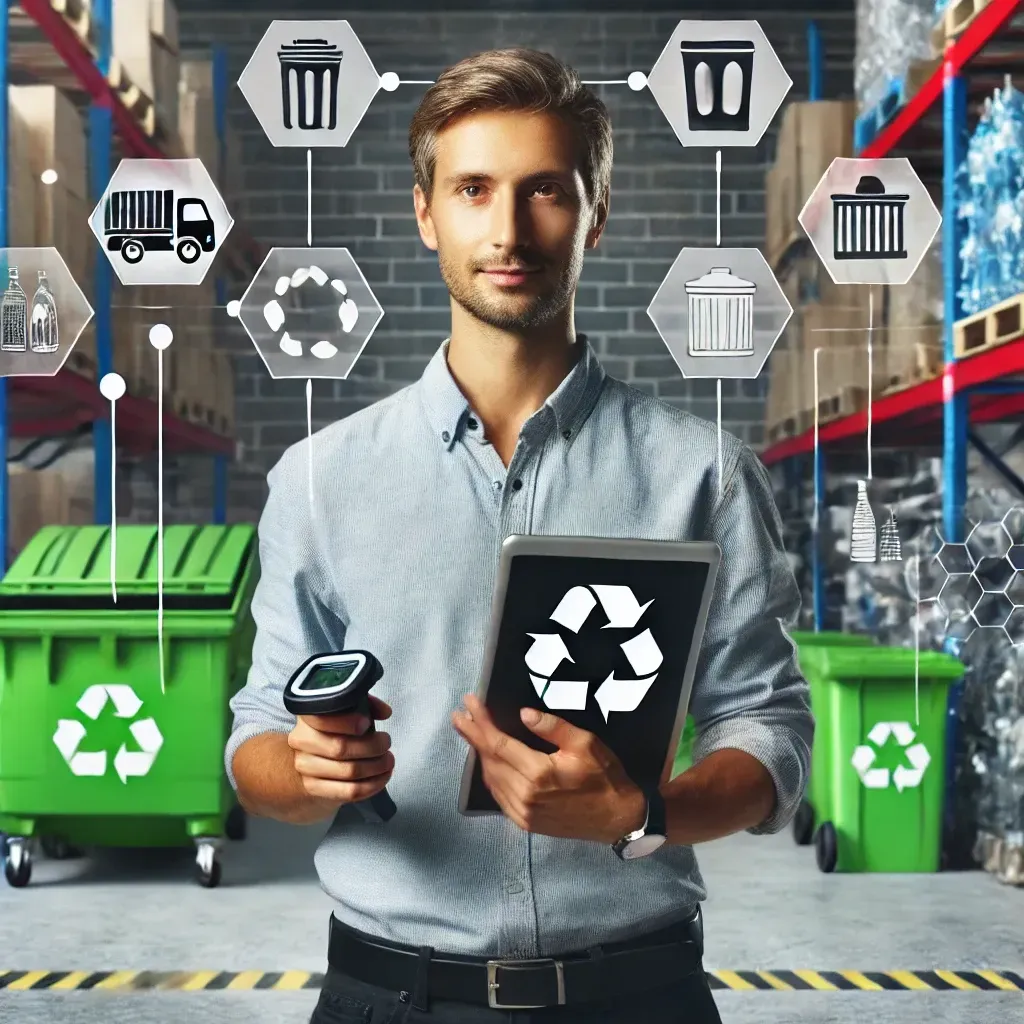Increase the Revenues of Your Waste Company With the Tips Shared in Our Blog Articles

How to Use Simple Tools to Supercharge Your Waste Management Business: The SAM Method Blueprint for Maximum Profits Without Adding Headcount
As the Waste Management Alchemist, I’m here to tell you that you don’t need high-end technology or a bloated team to implement the SAM Method (Stream Advanced Management). You just need the right tools—simple, affordable ones that can transform your business without breaking the bank.
The SAM Method is all about leveraging streamlined processes to identify valuable materials, tailor collection solutions, optimize processing, and build long-term, profitable partnerships. If you think that sounds complex, let me assure you it doesn’t have to be. By using a few accessible tools, you can speed up processes, avoid adding more headcount, and drive serious profitability.
Let’s dive into how you can make it happen.
Step 1: Audit and Identify Valuable Streams – The Power of Simple Data Collection Tools
The first step of the SAM Method is crucial: you need to identify the valuable materials your clients are producing and figure out the best way to collect and repurpose them. Most waste management companies skip this step or try to do it manually, which can lead to missed opportunities and overlooked revenue.
Tools for the Job:
1. Mobile Survey Apps: Instead of investing in complex software, start with free or low-cost mobile survey tools like Google Forms or SurveyMonkey. These apps let you create quick questionnaires for on-site data collection. This way, when your team visits a client, they can easily input data on the types and quantities of waste materials. You’ll have immediate, organized information on which waste streams are most valuable to target.
2. Barcode Scanners and Simple Inventory Apps: Use inexpensive barcode scanners paired with inventory tracking apps like Sortly or Stock Control. This approach allows you to tag and track specific waste items from collection to sorting, so you can get a clear view of the high-value materials in your waste stream. With a few dollars invested, you’ll be able to see which materials generate the most revenue potential.
3. Google Sheets or Excel: Forget the fancy software for now—Google Sheets or Excel can serve as your central data hub. Set up simple formulas to calculate material volume, collection frequency, and potential resale value. With this data at your fingertips, you’ll have a clear roadmap for which waste streams are worth focusing on.
By using these basic tools, you can gain a solid understanding of your clients’ waste production and identify the materials that are worth pursuing—all without needing complex or costly software.
Step 2: Tailored Collection Solutions – Streamline Routes with Route Optimization Apps
Once you know the valuable waste streams, the next step is to implement tailored collection solutions. This is where many companies get bogged down with scheduling nightmares and inefficient routes. But here’s the secret: you don’t need a high-priced logistics manager or specialized routing software. All you need are simple, affordable tools that allow you to optimize your routes and improve efficiency.
Tools for the Job:
1. Google Maps or Waze: Google Maps and Waze aren’t just for personal navigation. They offer basic route optimization features that can be used for free. By planning your routes here, you can save fuel, reduce travel time, and avoid unnecessary trips. Try plotting multiple stops in the order that makes the most sense for each client, reducing the time and cost involved in waste collection.
2. Route4Me or Circuit: If you want a bit more functionality, Route4Me or Circuit offers affordable plans for optimizing complex routes with multiple stops. These apps allow you to upload all your stops, and they’ll automatically generate the most efficient route. You can then send the route to your drivers’ phones, so they’re always on the most efficient path.
3. Digital Scheduling Apps: Use free scheduling apps like Google Calendar to set up reminders for each client’s collection times. This way, you’re not relying on memory or paper logs. It’s simple but effective, and it can drastically improve the reliability of your service. Clients appreciate punctuality, and you’ll look more professional while keeping costs down.
With route optimization and scheduling apps, you can avoid hiring a logistics team. These tools allow you to take control of your routes, making your operations leaner, faster, and more profitable.
Step 3: Streamlined Processing and Recycling – Simplify Sorting with Labeling Systems and Low-Cost Equipment
Now that you’re collecting valuable waste streams, it’s time to get serious about sorting and recycling efficiently. You don’t need a fancy sorting facility to process these materials; a few inexpensive tools can streamline the process and reduce the need for extra hands on deck.
Tools for the Job:
1. Labeling Systems: Start with a simple labeling system using color-coded bins and adhesive labels. For example, use blue for recyclables, green for organics, and red for hazardous waste. It sounds basic, but it’s incredibly effective. Workers can quickly and easily identify the right bins, and this reduces sorting errors. A roll of labels costs a few dollars but can save you hours in labor.
2. Basic Balers and Compactors: If you’re handling materials like cardboard, plastic, or metal, consider a low-cost baler or compactor. These machines don’t have to be expensive; you can find small balers for under $5,000 that still get the job done. Balers allow you to compress materials for easier storage and higher resale value without the need for extra employees to manage loose waste.
3. Handheld Scales: One of the simplest ways to get accurate data on your sorted materials is with a handheld scale. These scales are affordable but invaluable for tracking the weight of materials, which helps you assess the volume you’re processing and the potential resale value. This information feeds back into your inventory sheet so you can refine your collection strategies over time.
Investing in just these basic tools can make your processing and sorting more efficient, cutting down on labor costs and boosting the profitability of your recycling operations.
Step 4: Building Partnerships for Long-Term Revenue – Customer Relationship Management (CRM) on a Budget
The final step of the SAM Method is to build long-term partnerships with producers. This is where you lock in stable, recurring revenue by becoming a trusted partner rather than just another hauler. Managing relationships with producers might sound complicated, but with a few simple CRM tools, you can keep things organized and professional.
Tools for the Job:
1. HubSpot CRM: HubSpot offers a free CRM platform that allows you to track interactions with clients, log conversations, and even set reminders for follow-ups. This is ideal for managing partnerships with producers, keeping all your contacts organized, and building strong relationships over time.
2. Trello or Asana for Task Management: Use free project management tools like Trello or Asana to manage the various tasks associated with each client. Set up cards for each partnership, where you can track key details like collection dates, client requests, and follow-up actions. This helps you stay on top of client needs and ensures that no detail falls through the cracks.
3. Email Automation with Mailchimp: Staying in touch with your clients is critical for long-term success. Use a free email tool like Mailchimp to send automated updates, reminders, or even newsletters to your clients. By keeping them informed about your services, you’re reinforcing the value you bring and positioning yourself as an essential partner.
By leveraging affordable CRM tools and task management apps, you can build strong, lasting partnerships with clients without hiring a dedicated account management team.
Wrapping It Up: Simple Tools, Big Profits
To summarize, the SAM Method doesn’t require fancy tech or a hefty budget. You can implement each step effectively using simple, affordable tools that increase efficiency, save time, and drive profitability. By using mobile survey apps, route optimization software, labeling systems, and free CRM tools, you’ll be able to streamline your operations and provide exceptional service—without needing extra employees or expensive technology.
The bottom line? Waste management doesn’t have to be complicated to be profitable. The right tools, applied in the right way, will turn your business into a lean, mean, revenue-generating machine.
If you’re ready to elevate your waste management company, I invite you to download my free eBook, Thriving With Waste. It’s packed with actionable insights to help you leverage the SAM Method and build a thriving, profitable business.
To Your Success
Sam Barrili
The Waste Management Alchemist


© 2024 Marketing4waste - All Rights Reserved,
Marketing4Waste is a brand of MiM MarketingInterimManagers LLC
+1 801 804 5730

